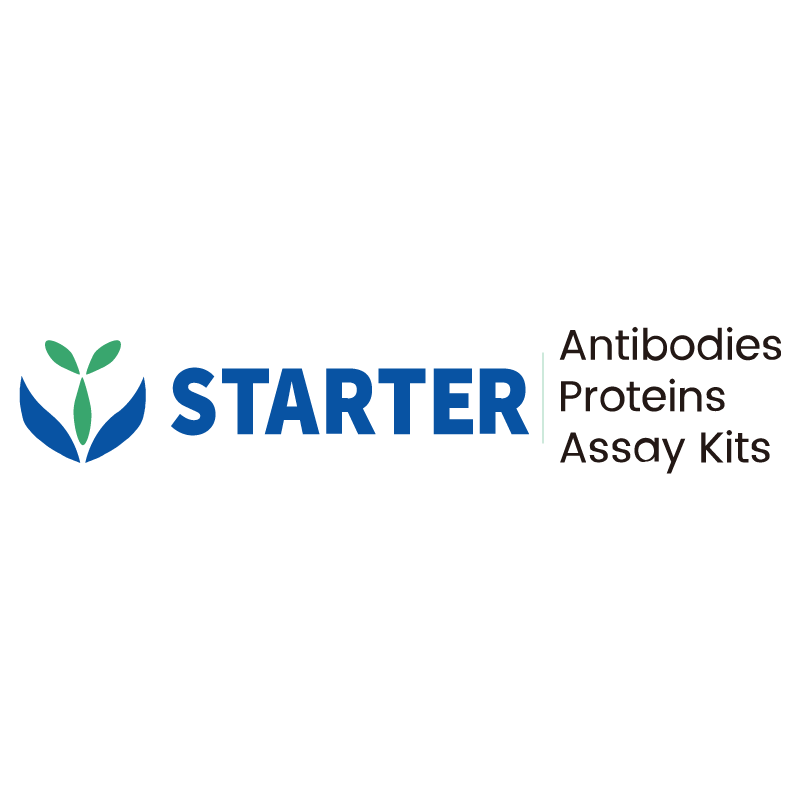WB result of NQO1 Rabbit pAb
Primary antibody: NQO1 Rabbit pAb at 1/20000 dilution
Lane 1: HepG2 whole cell lysate 20 µg
Lane 2: HeLa whole cell lysate 20 µg
Lane 3: MCF7 whole cell lysate 20 µg
Secondary antibody: Goat Anti-Rabbit IgG, (H+L), HRP conjugated at 1/10000 dilution Predicted MW: 31 kDa
Observed MW: 30 kDa
Product Details
Product Details
Product Specification
| Host | Rabbit |
| Antigen | NQO1 |
| Synonyms | NAD(P)H dehydrogenase [quinone] 1; Azoreductase; DT-diaphorase 1 (DTD); Menadione reductase; NAD(P)H:quinone oxidoreductase 1; Phylloquinone reductase; Quinone reductase 1 (QR1); DIA4; NMOR1 |
| Immunogen | Synthetic Peptide |
| Location | Cytoplasm |
| Accession | P15559 |
| Clone Number | S-1672-2 |
| Antibody Type | Recombinant mAb |
| Isotype | IgG |
| Application | WB, IHC-P, ICC, ICFCM |
| Reactivity | Hu |
| Positive Sample | HepG2, HeLa, MCF7 |
| Predicted Reactivity | Or |
| Purification | Protein A |
| Concentration | 0.5 mg/ml |
| Conjugation | Unconjugated |
| Physical Appearance | Liquid |
| Storage Buffer | PBS, 40% Glycerol, 0.05% BSA, 0.03% Proclin 300 |
| Stability & Storage | 12 months from date of receipt / reconstitution, -20 °C as supplied |
Dilution
| application | dilution | species |
| WB | 1:20000 | Hu |
| IHC-P | 1:100 | Hu |
| ICC | 1:100 | Hu |
| ICFCM | 1:50 | Hu |
Background
NQO1, or NAD(P)H:quinone oxidoreductase 1, is an enzyme encoded by the NQO1 gene in humans. It is a protective antioxidant and a multifunctional cell protector that can modulate the oxidative stress response to DNA damage in cancer cells by binding to chromatin-binding proteins. NQO1 is a homodimeric flavoenzyme that catalyzes the two-electron reduction of quinones to hydroquinones, thereby facilitating the excretion of quinones that would otherwise form semiquinones and generate reactive oxygen species (ROS) through redox cycling. NQO1 plays a crucial role in preventing oxidative damage to DNA caused by environmental stressors and maintains the reduced forms of endogenous antioxidants such as ubiquinone and α-tocopherol quinone. It is highly expressed in many solid tumors, including non-small cell lung cancer, pancreatic cancer, breast cancer, prostate cancer, colon cancer, and head and neck cancer, while its expression is very low in normal cells/tissues, making it an ideal target for cancer therapy. NQO1 has also been implicated in the regulation of glucose and insulin metabolism, which is relevant to diabetes and metabolic syndrome, as well as in Alzheimer's disease and aging.
Picture
Picture
Western Blot
FC
Flow cytometric analysis of 4% PFA fixed 90% methanol permeabilized HeLa (Human cervix adenocarcinoma epithelial cell) labelling NQO1 antibody at 1/50 dilution (1 μg) / (Red) compared with a Rabbit monoclonal IgG (Black) isotype control and an unlabelled control (cells without incubation with primary antibody and secondary antibody) (Blue). Goat Anti - Rabbit IgG Alexa Fluor® 488 was used as the secondary antibody.
Immunohistochemistry
IHC shows positive staining in paraffin-embedded human colon cancer. Anti-NQO1 antibody was used at 1/100 dilution, followed by a HRP Polymer for Mouse & Rabbit IgG (ready to use). Counterstained with hematoxylin. Heat mediated antigen retrieval with Tris/EDTA buffer pH9.0 was performed before commencing with IHC staining protocol.
IHC shows positive staining in paraffin-embedded human lung squamous cell carcinoma. Anti-NQO1 antibody was used at 1/100 dilution, followed by a HRP Polymer for Mouse & Rabbit IgG (ready to use). Counterstained with hematoxylin. Heat mediated antigen retrieval with Tris/EDTA buffer pH9.0 was performed before commencing with IHC staining protocol.
IHC shows positive staining in paraffin-embedded human pancreatic cancer. Anti-NQO1 antibody was used at 1/100 dilution, followed by a HRP Polymer for Mouse & Rabbit IgG (ready to use). Counterstained with hematoxylin. Heat mediated antigen retrieval with Tris/EDTA buffer pH9.0 was performed before commencing with IHC staining protocol.
Immunocytochemistry
ICC shows positive staining in HeLa cells. Anti- NQO1 antibody was used at 1/100 dilution (Green) and incubated overnight at 4°C. Goat polyclonal Antibody to Rabbit IgG - H&L (Alexa Fluor® 488) was used as secondary antibody at 1/1000 dilution. The cells were fixed with 100% ice-cold methanol and permeabilized with 0.1% PBS-Triton X-100. Nuclei were counterstained with DAPI (Blue). Counterstain with tubulin (Red).


